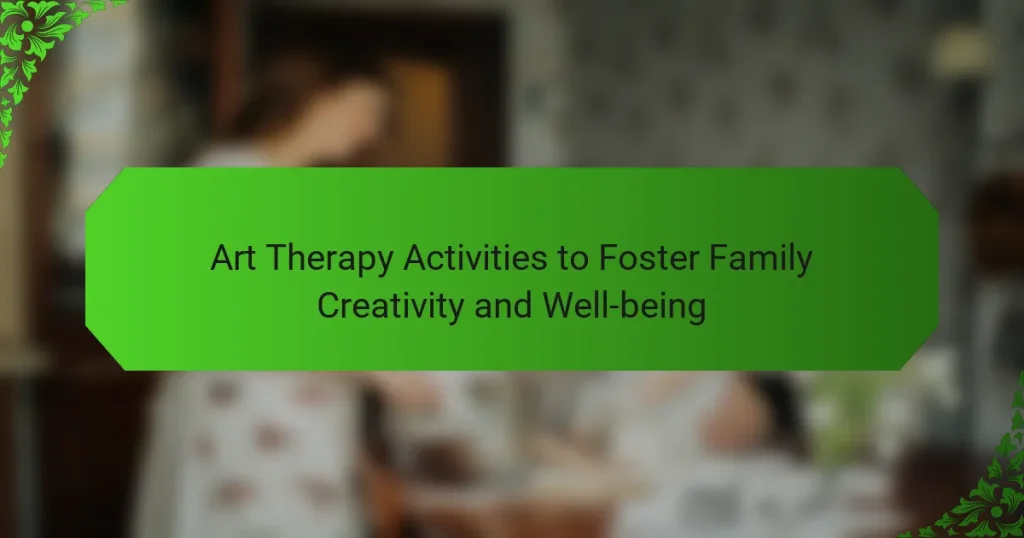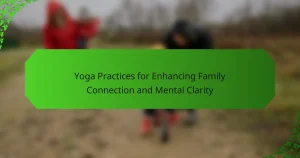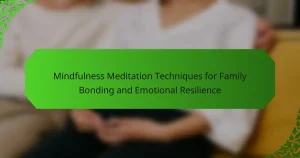Art therapy activities enhance family creativity and wellbeing by fostering communication and emotional bonds. Engaging in collaborative projects like mural painting and nature-inspired art promotes unity and reduces stress. Tailoring activities to cultural backgrounds enriches the experience, while avoiding common pitfalls maximizes therapeutic benefits. These approaches lead to healthier relationships and deeper connections within families.
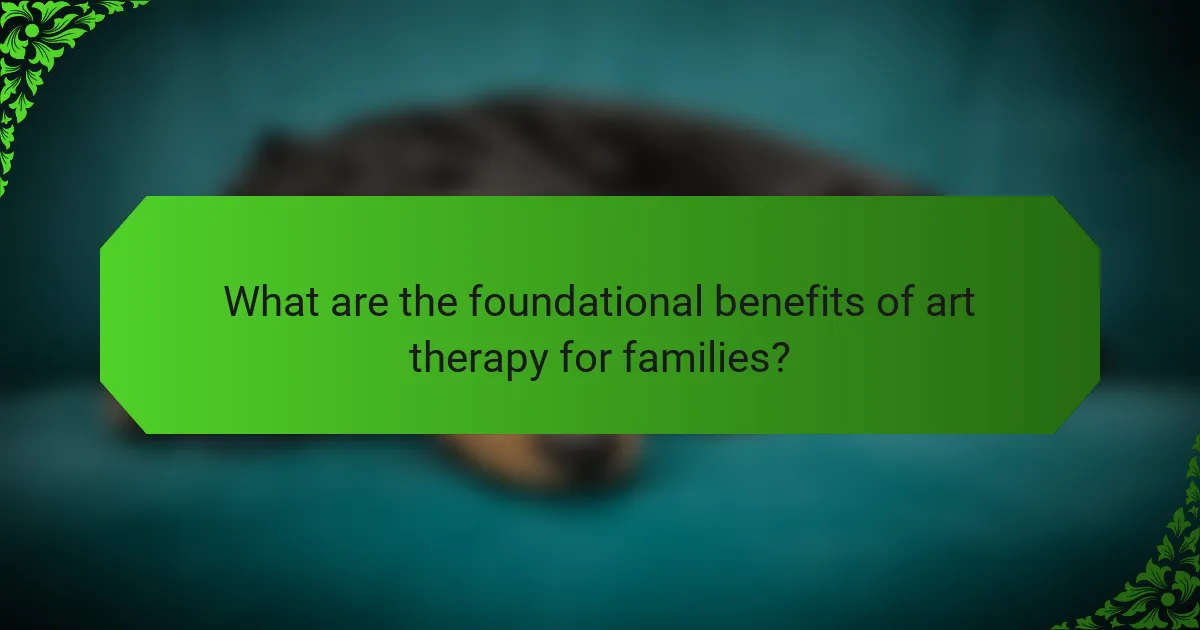
What are the foundational benefits of art therapy for families?
Art therapy offers families numerous foundational benefits, enhancing creativity and wellbeing. It fosters communication, strengthens emotional bonds, and provides a safe space for expression. Engaging in creative activities together can reduce stress and improve mental health, promoting a sense of unity. Families can experience increased empathy and understanding through shared artistic experiences, ultimately leading to healthier relationships.
How does art therapy enhance creativity in family members?
Art therapy enhances creativity in family members by fostering self-expression and emotional connection. Engaging in creative activities together strengthens family bonds and encourages collaboration. Research shows that art therapy reduces anxiety and promotes a sense of well-being, allowing family members to explore their thoughts and feelings in a safe environment. Additionally, participating in art projects can lead to improved communication skills and increased empathy among family members.
What role does art therapy play in improving family wellbeing?
Art therapy enhances family wellbeing by fostering creativity and emotional expression. Engaging in art activities together can strengthen family bonds and improve communication. Research shows that collaborative art projects reduce stress and promote a sense of belonging among family members. Unique attributes of art therapy include its ability to address individual emotional needs while simultaneously enhancing group dynamics. As a result, families can experience improved mental health and resilience through regular participation in art therapy sessions.
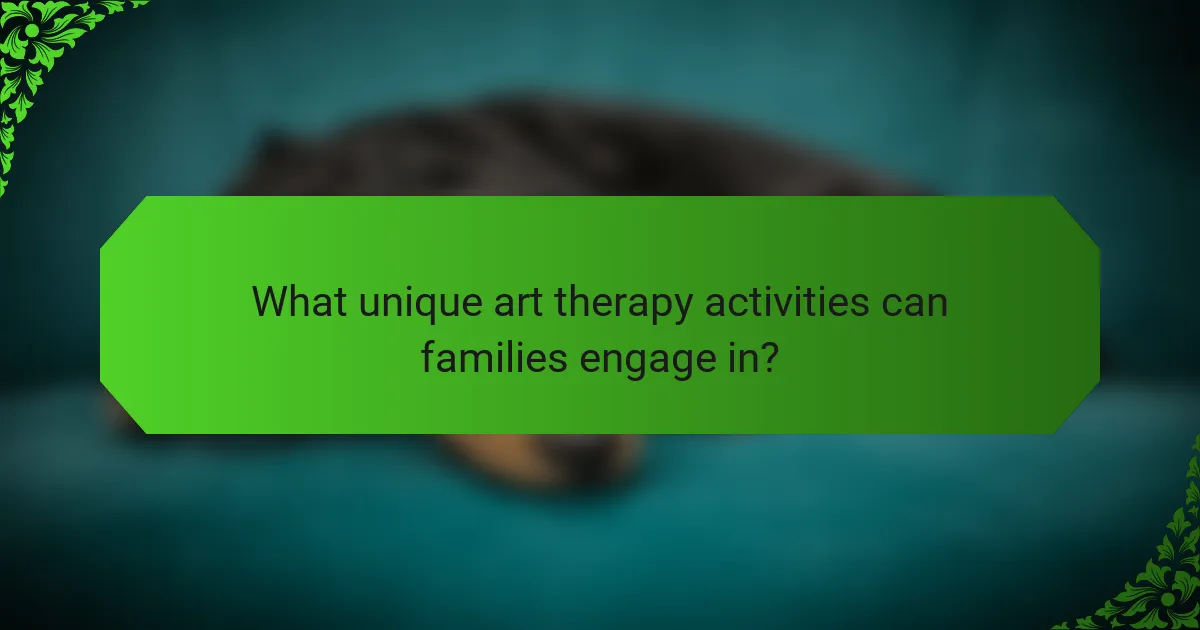
What unique art therapy activities can families engage in?
Families can engage in unique art therapy activities such as collaborative mural painting, nature-inspired art projects, and storytelling through illustrations. These activities foster creativity, enhance communication, and promote emotional well-being. For instance, collaborative mural painting allows family members to express their feelings and ideas visually, creating a shared sense of accomplishment. Nature-inspired art projects encourage families to connect with the environment while exploring textures and colours. Storytelling through illustrations can strengthen family bonds by sharing experiences and emotions in a creative way.
How can families incorporate nature into their art therapy sessions?
Families can incorporate nature into art therapy sessions by using natural materials and outdoor settings. Engaging with elements like leaves, stones, and flowers fosters creativity and connection to the environment.
One effective activity is creating nature collages. Families can collect various natural items during a walk and then arrange them on paper to express emotions and experiences. This hands-on approach enhances mindfulness and encourages artistic expression.
Another option is to paint or draw outdoors. Setting up an art station in a park allows families to capture the beauty of their surroundings while promoting relaxation and conversation. This unique attribute of outdoor creativity can deepen family bonds.
Lastly, families can explore nature-inspired themes in their artwork. Discussing concepts such as seasons or wildlife can guide the creative process, making it an enriching experience that nurtures both individual and collective well-being.
What materials are best for outdoor art projects?
Natural materials like wood, stone, and clay are ideal for outdoor art projects. They provide durability and blend well with nature. Additionally, recycled materials such as plastic bottles and cardboard can foster creativity while promoting sustainability. Using weather-resistant paints enhances the longevity of outdoor artworks.
What are some digital art therapy options for families?
Digital art therapy options for families include interactive apps, online workshops, and virtual art classes. These activities promote creativity and emotional expression while strengthening family bonds.
1. Interactive Apps: Tools like Procreate or ArtRage allow families to create digital artwork together, fostering collaboration and creativity.
2. Online Workshops: Platforms like Skillshare and Udemy offer art therapy courses tailored for families, focusing on emotional well-being and creative expression.
3. Virtual Art Classes: Many organizations provide live, guided art sessions, helping families connect and create in real-time, enhancing their emotional health.
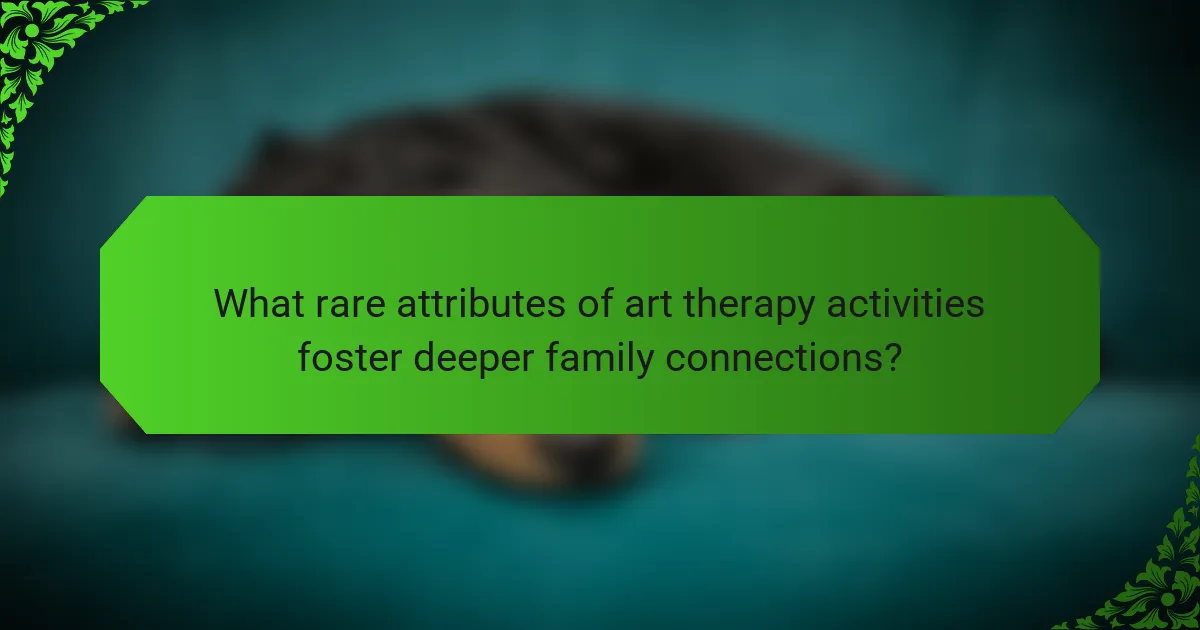
What rare attributes of art therapy activities foster deeper family connections?
Art therapy activities can foster deeper family connections through unique attributes such as collaborative expression, emotional safety, and shared experiences. Collaborative expression allows family members to work together on projects, enhancing teamwork and communication. Emotional safety creates an environment where individuals feel comfortable expressing feelings, leading to stronger bonds. Shared experiences during art creation promote mutual understanding and empathy, enriching family relationships. These rare attributes differentiate art therapy from other activities by emphasizing emotional and relational growth alongside creativity.
How can art therapy facilitate communication among family members?
Art therapy can significantly enhance communication among family members by providing a creative outlet for expression. Engaging in art activities allows individuals to share emotions and thoughts that may be difficult to verbalize. Collaborative projects, such as creating a mural or a family scrapbook, foster teamwork and connection.
Additionally, art therapy promotes active listening and empathy as family members interpret each other’s artistic expressions. This process can reveal underlying feelings and strengthen relationships. Research indicates that families who participate in art therapy report improved communication and emotional bonding.
In summary, art therapy activities cultivate a safe space for dialogue, encouraging families to connect on deeper levels through creativity.
What specific art forms can evoke unique emotional responses?
Art forms such as painting, music, and dance can evoke unique emotional responses. Each medium allows for personal expression and connection, fostering creativity and wellbeing in family settings.
Painting often serves as a visual outlet, enabling individuals to convey feelings through colours and brush strokes. Music can influence mood and create shared experiences, enhancing emotional bonds. Dance combines physical movement with rhythm, promoting joy and releasing tension.
Engaging in these art forms during therapy activities can lead to improved communication and emotional understanding among family members.
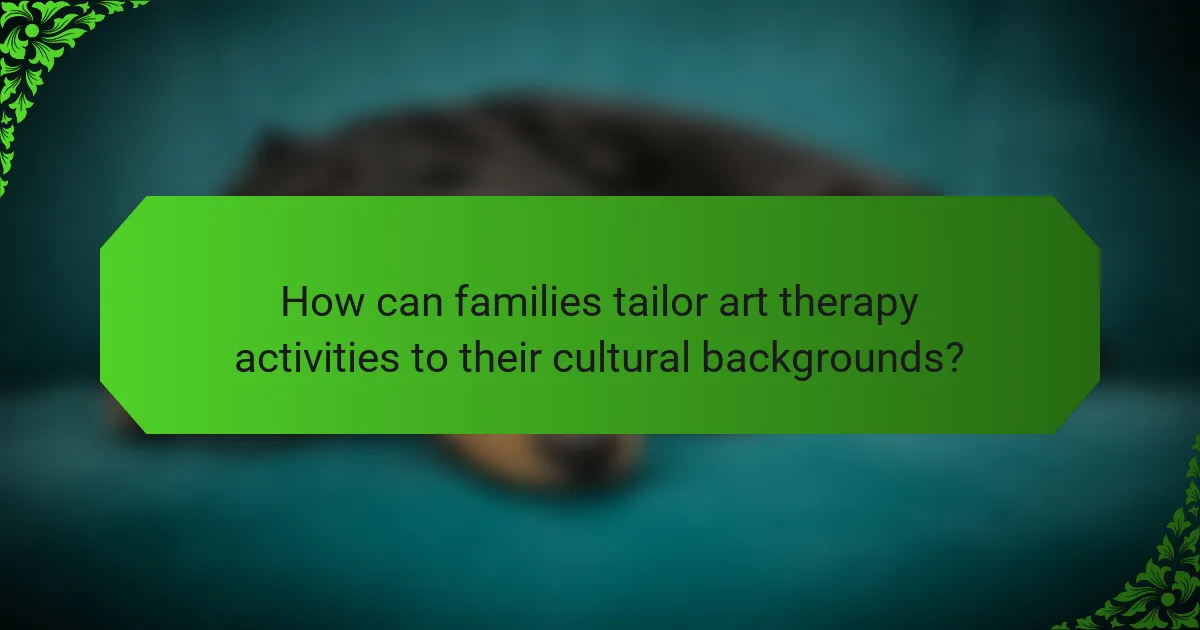
How can families tailor art therapy activities to their cultural backgrounds?
Families can tailor art therapy activities to their cultural backgrounds by integrating traditional art forms and themes. This personalization enhances engagement and fosters a deeper connection to cultural identity. For instance, families can explore indigenous techniques or culturally significant symbols in their artwork. Incorporating storytelling related to cultural heritage can also enrich the experience, allowing for shared narratives and reflections. Additionally, using materials that resonate culturally, such as natural dyes or local crafts, can make the activities more meaningful. Ultimately, adapting art therapy to reflect cultural values promotes creativity and wellbeing within the family unit.
What are some culturally specific art techniques families can explore?
Families can explore various culturally specific art techniques to enhance creativity and wellbeing. Techniques such as Japanese origami, which promotes patience and focus, or Aboriginal dot painting, which fosters storytelling and connection to heritage, can be beneficial. Additionally, Mexican papel picado encourages collaboration and vibrant expression. Exploring these art forms can deepen family bonds and provide a unique cultural experience.
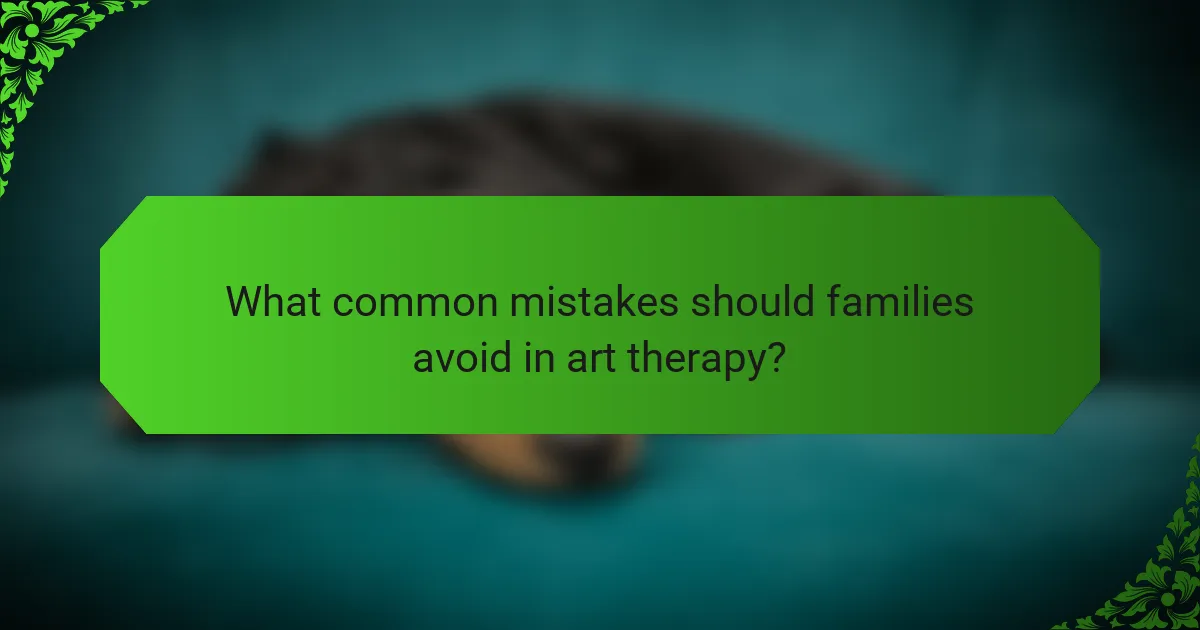
What common mistakes should families avoid in art therapy?
Families should avoid common mistakes that hinder the effectiveness of art therapy. These include not setting clear goals, dismissing children’s contributions, focusing solely on the final product, and neglecting emotional expression. Setting specific objectives helps guide sessions. Valuing every input fosters creativity and confidence. Emphasizing the process over the outcome encourages exploration. Supporting emotional expression enhances therapeutic benefits. By steering clear of these pitfalls, families can maximize the positive impact of art therapy on creativity and wellbeing.
How can families ensure a supportive environment during art therapy sessions?
Families can ensure a supportive environment during art therapy sessions by fostering open communication and encouraging participation. Create a space that is free of distractions and filled with art supplies. Establishing a routine can help children feel secure and ready to express themselves. Active involvement from family members enhances the therapeutic experience, allowing for shared creativity and connection.
What expert tips can enhance the effectiveness of art therapy activities?
Incorporating expert tips can significantly enhance the effectiveness of art therapy activities. Focus on creating a safe, non-judgmental space where family members feel comfortable expressing themselves. Encourage open communication about feelings associated with their artwork. Use specific themes or prompts to guide activities, fostering deeper emotional exploration. Incorporate diverse art materials to stimulate creativity and engagement. Lastly, regularly reflect on the process and outcomes to reinforce the therapeutic benefits and family bonding.
